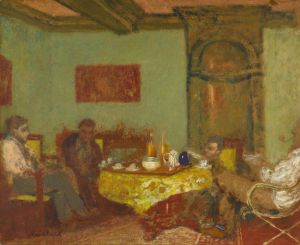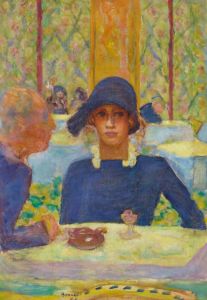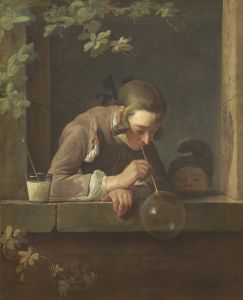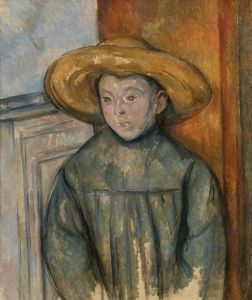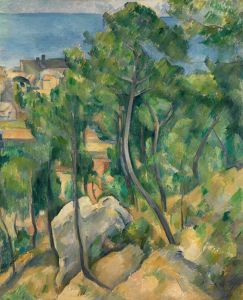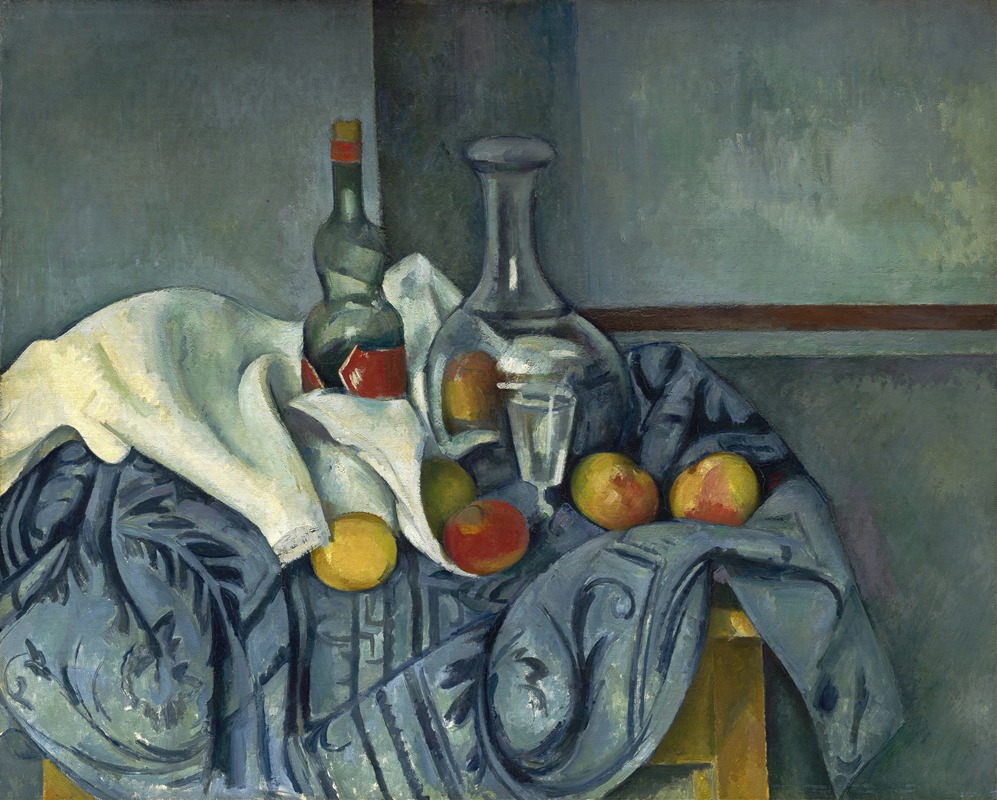
The Peppermint Bottle
A hand-painted replica of Paul Cézanne’s masterpiece The Peppermint Bottle, meticulously crafted by professional artists to capture the true essence of the original. Each piece is created with museum-quality canvas and rare mineral pigments, carefully painted by experienced artists with delicate brushstrokes and rich, layered colors to perfectly recreate the texture of the original artwork. Unlike machine-printed reproductions, this hand-painted version brings the painting to life, infused with the artist’s emotions and skill in every stroke. Whether for personal collection or home decoration, it instantly elevates the artistic atmosphere of any space.
Paul Cézanne's "The Peppermint Bottle" is a notable example of the artist's still life paintings, a genre in which he made significant contributions during the late 19th and early 20th centuries. Painted around 1893-1895, this work exemplifies Cézanne's innovative approach to composition, color, and form, which would later influence the development of modern art, particularly Cubism.
"The Peppermint Bottle" features a carefully arranged composition of everyday objects, including a peppermint bottle, a bowl, and some fruit, set against a draped background. Cézanne's choice of objects reflects his interest in the ordinary and his ability to elevate simple subjects through his distinctive style. The painting is characterized by its balanced composition and the interplay of geometric shapes, which are hallmarks of Cézanne's technique.
Cézanne's approach to still life was revolutionary for his time. He moved away from the traditional realistic representation of objects, instead focusing on the underlying structure and form. In "The Peppermint Bottle," this is evident in the way he uses color and brushwork to create volume and depth. Cézanne often employed a technique known as "passage," where he allowed colors and forms to blend into one another, creating a sense of continuity and movement within the painting.
The color palette of "The Peppermint Bottle" is both subtle and vibrant, with Cézanne using a range of greens, blues, and earth tones to create harmony and contrast. The peppermint bottle itself, with its distinctive green hue, serves as the focal point of the composition, drawing the viewer's eye and anchoring the arrangement of objects. The surrounding fruits and bowl are rendered with a similar attention to color and form, demonstrating Cézanne's mastery of capturing the essence of his subjects.
Cézanne's work on still lifes, including "The Peppermint Bottle," was instrumental in challenging the conventions of perspective and representation. He often depicted objects from multiple viewpoints, a technique that would later be embraced by Cubist artists such as Pablo Picasso and Georges Braque. Cézanne's exploration of form and space laid the groundwork for these later developments in art, earning him recognition as a pivotal figure in the transition from 19th-century Impressionism to 20th-century modernism.
"The Peppermint Bottle" is housed in the collection of the Musée d'Orsay in Paris, where it continues to be studied and admired by art enthusiasts and scholars. The painting is a testament to Cézanne's enduring influence and his ability to transform simple subjects into profound artistic statements. Through works like "The Peppermint Bottle," Cézanne not only redefined the still life genre but also paved the way for future generations of artists to explore new possibilities in visual expression.





